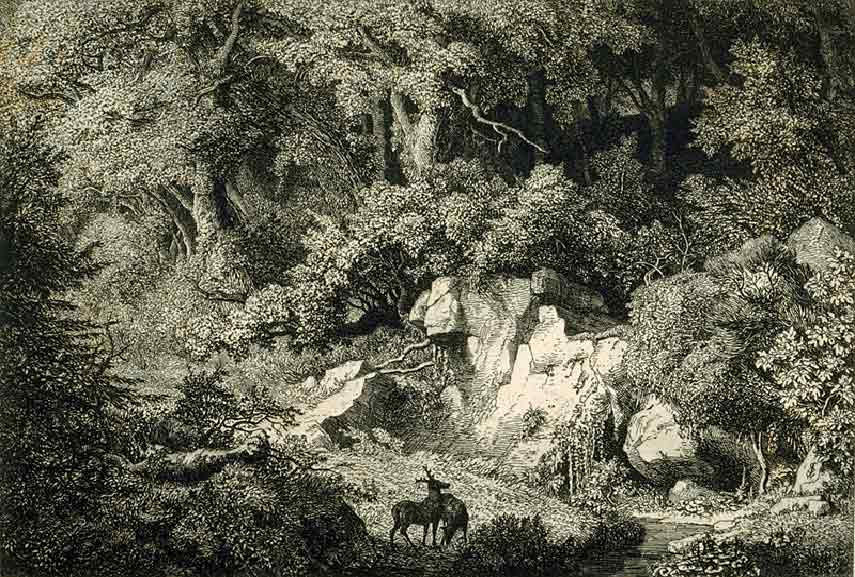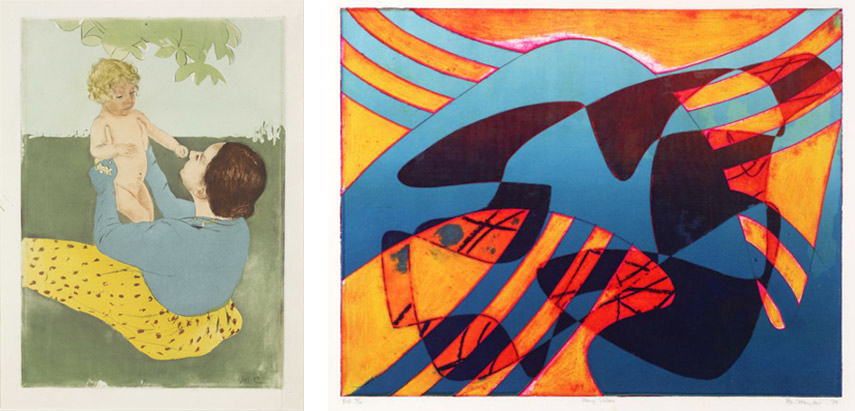All About the Aquatint - The Intaglio Printmaking Technique
For anyone that has ever held a zinc or copper plate in their hands and has experienced the thrill two metal plates hold as the starting points for one of the longest creative tradition, will for sure enjoy the story behind he thin metal. Here, we aim to bring to you all the secrets of the aquatint printmaking technique, its history, process, and some of the most celebrated pieces. The creation of such pieces, the original printed images that are hand-made, use a range of traditional techniques such as relief, intaglio, planographic, serigraphs, and monotypes[1] yet today our focus is placed on a method of intaglio printing where the acid helps to create an effect of a water wash. This result is one of the reasons that the aquatint technique allows its lovers to not only produce fine art print editions, celebrated in the growing number of print fairs around the world, but to ‘dip’ into more commercial waters, such as illustrations and original book designs. Both to an extent dangerous and yet highly awarding, the discovery of such a method of production dates far back to 1768[2] and you can imagine how rich its history is, so let us take you on its journey.

The History of Aquatint Art
As mentioned at the beginning, the discovery of the aquatint process echoed the desire to reduce the hard labor involved in mezzotint for the achievement of various tonal results in ink images. A French artist Jean Baptiste Le Prince did this in 1786. He was the first to implement a process which involved the sprinkling of fine powder rosin dust on a metal plate, where the particles were later fused to the metal surface by a heating process upon which the plate was placed into an etching bath with a mixture of acid and water. The coined term, in fact, originates from the two Latin words ‘aqua’ for water and ‘tint’ for tone, which in fact describe the effects produced. The coining of the term was formed in England by the artist Paul Sandby for the purpose of describing the results. Unlike engraving and drypoint, where the marks and lines, created by the bite of the acid are what build an image, aquatint is focused on a variety of tonal differences. Le Prince’s innovation was surely a breakthrough and it quickly caught on in England where the trend of landscape watercolors was developing[2]. It is the area of topography production in particular that this printmaking process helped to develop. The first results were various tones of gray and black, few later colored by hand. These images were very similar to the watercolors and were much celebrated yet sold at the fair price. For this purpose, aquatint held its place until the 1830’s when it was replaced by tinted lithography[2]. At that time, aquatint was rare as the process was relatively difficult and time-consuming.

Description of the Aquatint Process
The magic of printmaking lies in the process of the production and in the anticipation of the first glance of the ink image after the printer or the artist exposes the image from the worked surface that was pushed through a printing press and flips to record the results of his or her labor. A variety of surfaces are used for the creation of different images, and apart from metal, printmakers use wood, linoleum, silkscreen, or glass. Each technique has its own rules and for sure the aquatint process is one of the most laborious and particular ones.
It all begins with a metal zinc or copper plate. The edges need to lowered to avoid the possible cut and it needs to be prepared for the process of dusting the rosin dust. This rosin derives from pine tree resin that was grounded to a fine powder. The even spread of the dust can be quite tricky, and there are a variety of approaches. Few printmakers use the rosin box, and there are some who are known for collecting the dust and stuffing a stocking or a silkscreen rug with it. Hiding the rug would release the dust, while the spinning of the box, prior to placing the metal plate inside it, would provide a cloud of dust that would gently fall onto a plate. The heating process, be it by a light torch, alcohol flame, or even an oven, would melt and glue the rosin, forming small drops.
By painting areas on the plate with something printmakers refer to as ground (asphalt or varnish[3]) that stops the acid biting, printers have a fair amount of control of the acid. By timing how long the plate is left in the etching tub the results vary in tone. The longer you leave the plate in acid the darker tone you will receive and the plate itself would form a surface that resembles a sandpaper. There are different ways one can make an aquatint; you can employ a spit bite aquatint, which forms the watercolor wash effect. The adding of a liquid soap mixture, known as soap ground, would help to create irregular tones, while the sugar lift aquatint allows much more freedom and playfulness. Of course, what follows next is the process of placing ink o the plate, the rubbing of the access amount, and later printing by pushing the plate through a printing press.

Some of The Famous Examples
More often than not, printmakers opt to combine different techniques on one plate and in most cases it is a combination of engraving and aquatint that has mesmerized most of us. Such mix marks the production of the famous painter and printmaker Francisco de Goya. As much as the elaborate production of English etchers helped this method to flourish, it was in the hands of this great Spanish artist that it became a medium of masterpieces[4]. His famous series of Los Caprichos, Los Desastres de la Guerra, La Tauromaquia, and Disparates, are till today examples of the skillful approach to the traditional printmaking methods and the elaborate art of line. Starting his series with hard and forceful lines that helped to form the drawing, the image was lifted to another level by the various shading of tones, results of the technique in question. To this name, we can also place Albert Durer, Pablo Picasso, Otto Dix, American Impressionism artist Mary Cassatt.
Goya is possibly one of the first authors whose name we associate with this tricky process of creation, but few of you may know that David Hockney, known for his famous paintings of Los Angeles lifestyle, also has created printed works with this method, unlike his fellow Pop artist, Andy Warhol, whose production followed strictly the silkscreen technique.
Since the art of printing is a branch of contemporary art production that is always present in the art marketplace, there are a great number of other names we could have mentioned, but we will leave you here in order to challenge you to explore more of this particular technique that makes most printmakers feel like true masters and wizards of their craft.
Editors’ Tip: A Guide to Traditional Techniques
This book is a must-have for anyone that is truly interested in learning more about the traditional techniques of printmaking for educational purpose and for gaining a deeper insight into what is what, and for those who need practical guidelines for their own production. Introducing the basics of etching, the book is a guide for material use, various printmaking processes, both the traditional and contemporary mixed-media works.
Sources:
- Anonymous, Process - Aquatint, Printmakers Network
- Anonymous, History of Printing, HistoryWorld.net
- Anonymous, Aquatint, Wikipedia The Free Encyclopedia
- Colta Ives, The Printed Image in the West: Aquatint, The Met Museum, October 2003
All images used for illustrative purposes only. Featured image in slider: Francisco de Goya – Los Disparates, plate 10, Caballo. Image via www.pomona.edu; David Hockney – Receiving the Inheritance. Image via www.tate.org.uk; Vito Acconci – Crash. Image via unomaha.edu.
Can We Help?
Have a question or a technical issue? Want to learn more about our services to art dealers? Let us know and you'll hear from us within the next 24 hours.

